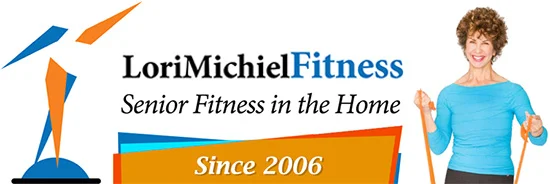An effective trainer wears many hats — friend, teacher, motivator and disciplinarian. Does your trainer meet these criteria?
“The less you do, the worse you feel, and the less you get out of life”, states Michael Gordon, MD, professor at the University of Toronto. Exercise – especially for older adults and seniors is more about quality of life, remaining independent and feeling better than it is about having a flat stomach or a “six pack”.
Having taught fitness to older adults over the years, I face a variety of functional levels among individuals, whose age range from 45 through 101. Just as there are varied fitness levels in a group of athletes, the same goes for variations in older adults. Some people remain active into their 80’s, while others need to modify their regimen.
The instructor/leader: “Because of the large range of medical conditions and functional abilities in the 65+ population, those instructors who choose to work with older adults require more knowledge, education and skills than an instructor of younger adults.” (Jones & Rose, 2006)
There is no question that a program (individual training or group class) must be led by instructors, who are knowledgeable, have experience and a sense of humor; and most importantly, know their scope of practice, and have confidence in their abilities. The trainer must be accountable. They need to know each client’s chronic conditions and the modifications she/he needs to make. Trainers also need to know when to refer clients to their physician or the time to suggest an alternative program, such as physical therapy.
The program: One size does not fit all. Not everyone is going to “fit” or enjoy a program. However, there are some general guidelines I follow that have generated adherence to my programs.
Few or easy-to-follow moves: Too often clients drop out of a group fitness class because the choreography is too difficult to follow. Rather than get a workout, the individuals are more concerned about whether they can follow the steps; it can get frustrating and dangerous.
Variety: There needs to be a change in the routine, while keeping a basic structure. Work with free weights and resistance tubing on one day, then mix it up and use balance equipment or balls another day.
Music: The biggest mistake an instructor can make is playing music that he or she likes rather than what would appeal to the participants. If clients are singing along during class, a trainer knows they’re happy. Modifying the music tempo and volume are important considerations. Music choices need to have a defined tempo and choreography that is easy to follow. If the trainer counts out loud, the participant will know how long to expect a repetition or set to last.
Time of day: Generally, someone with a chronic condition takes more time to get up and ready. Gear the activity to late morning if possible. Also, the length of the session may be modified in addition to encouraging you to do other activities during the day.
The equipment: There are two ways to modify exercises using equipment: choosing the right equipment and placing it appropriately for the level of exercise.
Using a stability ball for balance can be one of the most difficult pieces of equipment to use because it is anything but stable. One way to keep it from moving out from under you is to place it on the top of a square step riser. It helps to improve your ability to perform.
Place a balance disc on a chair, which encourages you to maintain stability while having the safety of a seated position. When you place a disc both on the chair seat and on the floor; you work harder to maintain stability.
Learn to substitute one type of equipment for another, based on your ability. For instance, use resistance bands and tubing, instead of free weights.
Slightly frail seniors can use walkers and or ski poles to modify walking/gait training or balance activities. You can balance by using a chair, either for part of the time or for the entire exercise session. This is frequently done in chair aerobics.
Read more about the importance of balance.
Next month: Part 2: Warm-ups, movement modification, strength training and more!
Check back with us next month for more tips you can use so you don’t get injured. In the meantime, contact us for private training, stretch classes, program design or presentations for your organization. Visit our website at www.lorimichielfitness.com or contact us via email or call 818-620-1442. We see fitness differently!
